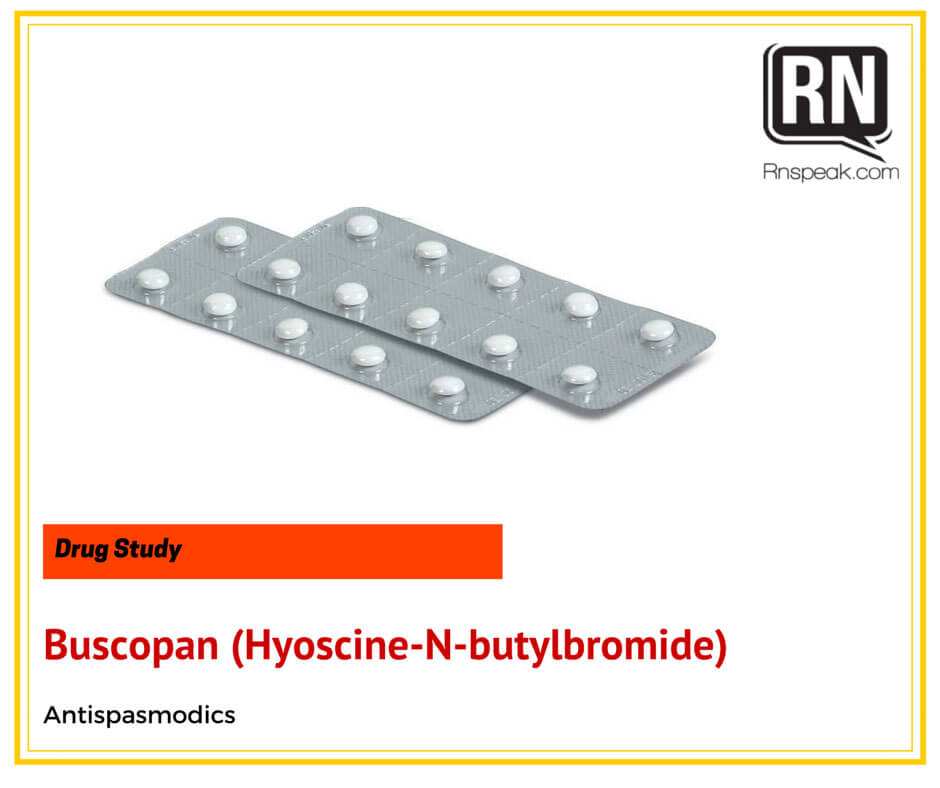Brand Name: Buscopan
Generic Name: Hyoscine-N-butylbromide
Classification: Antispasmodics
Pregnancy Category: C
Availability: Tablet 10 mg,Ampule 20mg
Action
The mechanism of action of Buscopan is that it blocks the muscarinic receptors found on the smooth muscle walls which means its blocks the action of acetylcholine on the receptors found within the smooth muscle of the gastrointestinal and urinary tract and thus reduces the spasms and contractions. This relaxes the muscle and thus reduced the pain from the cramps and spasms.
Indication
- Spasm in the genitourinary tract
- Spasm in the gastrointestinal tract
- Spasm in the biliary tract
- Colic
Contraindications
Myasthenia gravies, megacolon, hypersensitivity to drug contents, narrow angle glaucoma, prostate hypertrophy with urinary retention, mechanical stenosis in the GI tract, tachycardia.
Cautious Use
Thyrotoxicosis, cardiac insufficiency, pyrexia, fructose intolerance.
Route & Dosage
Tablet Adult and child >6 y/o 1 to 2 tab TID-QID
Ampule
Colic Pain Adult and adolescent >12 y/o 1-2 amp IV/IM/SC several times daily. Maximum dose: 100mg/day
Infant and young children 0.3-0.6 mg/kg/body weight by slow IV/IM/SC several times daily. Maximum dose: 1.5 mg/kg/body weight.
Adverse effects
- Constipation
- Decreased sweating
- Mouth, skin, eye dryness
- Blurred feeling
- Bloating
- Dysuria
- Nausea or vomiting
- Lightheadedness
- Headache
- Weakness
Drug Interaction
- Potassium chloride
- Metoclopramide
- MAO inhibitors
- Beta-agonists
- Anticholinergics
- Antacids
- Droperidol
Patient & Family Education
- Take this drug 30 minutes to 1 hour before meals
- Buscopan will potentiate the effect of alcohol and other CNS depressants.
- Do not take antacids and antidiarrheal 2 to 3 hours prior to raking this drug.
- It is not necessary to take the medication if you are not in pain.
- Avoid driving or operating machinery after parenteral dose.
Source: http://www.medic8.com/healthguide/articles/buscopan.html








